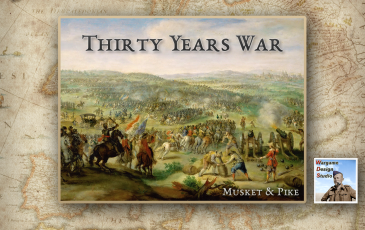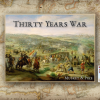039_Battle of the Lech or Rain - Salvo Variant - WDS Thirty Years War

64f8a9520a0c004fd5ef.jpg) 0 - 0 - 0
0 - 0 - 0
435be480296def0cb8f9.jpg)
| Rating: | 0 (0) |
| Games Played: | 0 |
| SM: | 1 |
| Turns: | 18 |
| Type: | Stock |
| First Side: | Anti-Imperialist (TYW) |
| Second Side: | Imperialist (TYW) |
Date: 15th April 1632 - Size: Medium - Location: Rain, Swabia, Bavaria
Scenario Briefing: Battle of the Lech or Rain - The decisive victory at Breitenfeld in September 1631 allowed the Swedish king Gustavus Adolphus to strengthen his position in Germany. However, the Swedish failure to hunt down the defeated enemy army, allowed Tilly time to join up with reinforcements and threaten first Wurzburg and then Nuremberg before going into winter quarters with his army of demoralized survivors of Breitenfeld and raw recruits. Both sides recruited heavily over the winter months. On 9th March 1632, Tilly attacked and defeated Horn at Bamberg, forcing Gustavus to change his campaign plans and deal with Tilly. After capturing Donauwerth, Gustavus prepared to cross the Lech River where Tilly, with an outnumbered and weaker army was determined to make a stand. While Tilly's main force occupied a fortified camp, a redoubt had been constructed to defend a key crossing point just south of Rain. Gustavus constructed earthworks for his guns during the night and sent elite troops in boats - 334 Finns of Hastfer infantry regiment - to secure the islet in preparation for a potential general assault. However, Gustavus also dispatched William Sax-Weimar's corps to cross the river further downstream to turn the enemy position. While Gustavus planned to renew the fight the following day, Tilly had been mortally wounded and Aldringer also badly wounded, so Maximilian himself had to assume command of the Catholic army. Since Sax-Weimar's troops were already across the river in strength Maximilian wisely decided to fall back to Ingolstadt to preserve his army intact.
Recommended Rules: Default
Note: Perhaps best played as the Catholic (Imperialist) side against the Anti-Imperialist A/I, but suitable to be played either side or in Head-to-Head.
Note: This scenario uses the Salvo pdt, with increased fire factors for Salvo muskets but no defensive fire capability. In addition, battalion guns are represented abstractly with enhanced range and firepower for the associated infantry units.
Scenario Briefing: Battle of the Lech or Rain - The decisive victory at Breitenfeld in September 1631 allowed the Swedish king Gustavus Adolphus to strengthen his position in Germany. However, the Swedish failure to hunt down the defeated enemy army, allowed Tilly time to join up with reinforcements and threaten first Wurzburg and then Nuremberg before going into winter quarters with his army of demoralized survivors of Breitenfeld and raw recruits. Both sides recruited heavily over the winter months. On 9th March 1632, Tilly attacked and defeated Horn at Bamberg, forcing Gustavus to change his campaign plans and deal with Tilly. After capturing Donauwerth, Gustavus prepared to cross the Lech River where Tilly, with an outnumbered and weaker army was determined to make a stand. While Tilly's main force occupied a fortified camp, a redoubt had been constructed to defend a key crossing point just south of Rain. Gustavus constructed earthworks for his guns during the night and sent elite troops in boats - 334 Finns of Hastfer infantry regiment - to secure the islet in preparation for a potential general assault. However, Gustavus also dispatched William Sax-Weimar's corps to cross the river further downstream to turn the enemy position. While Gustavus planned to renew the fight the following day, Tilly had been mortally wounded and Aldringer also badly wounded, so Maximilian himself had to assume command of the Catholic army. Since Sax-Weimar's troops were already across the river in strength Maximilian wisely decided to fall back to Ingolstadt to preserve his army intact.
Recommended Rules: Default
Note: Perhaps best played as the Catholic (Imperialist) side against the Anti-Imperialist A/I, but suitable to be played either side or in Head-to-Head.
Note: This scenario uses the Salvo pdt, with increased fire factors for Salvo muskets but no defensive fire capability. In addition, battalion guns are represented abstractly with enhanced range and firepower for the associated infantry units.





















